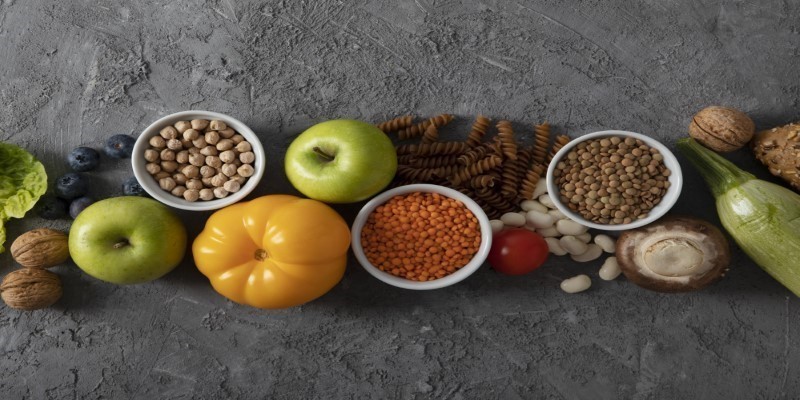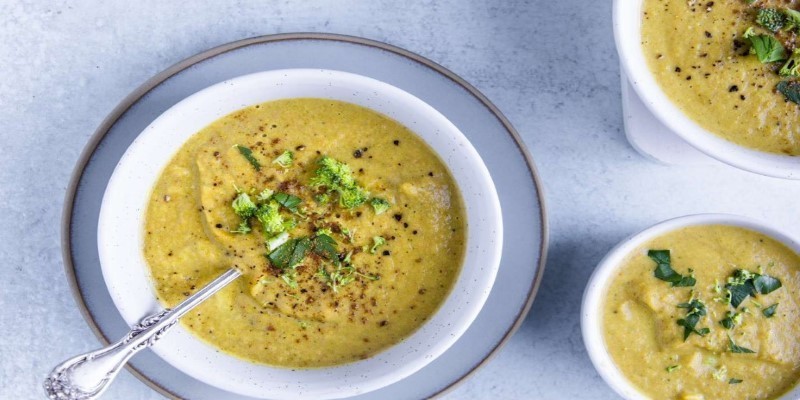How To Create Healthy Plant-Based Meals At Home
In recent years, the popularity of plant-based eating has surged, and for good reason. Many people are embracing this lifestyle for its numerous health benefits, environmental impact, and ethical considerations.
In recent years, the popularity of plant-based eating has surged, and for good reason. Many people are embracing this lifestyle for its numerous health benefits, environmental impact, and ethical considerations. Creating healthy plant-based meals at home doesn’t have to be complicated or overwhelming. With a few key principles and ingredients, you can whip up delicious dishes that nourish your body and satisfy your taste buds. Let’s dive into some fundamental aspects of preparing healthy plant-based meals that are both enjoyable and accessible.
Understanding Plant-Based Eating
Before preparing meals, it's essential to understand a plant-based diet. This diet focuses primarily on foods derived from plants, including fruits, vegetables, grains, legumes, nuts, and seeds. While it doesn't necessarily mean eliminating all animal products, the emphasis is on incorporating a variety of plant foods. This diet is rich in fiber, vitamins, minerals, and phytonutrients, contributing to overall health.

One of the biggest advantages of eating plant-based is its potential to lower the risk of chronic diseases such as heart disease, diabetes, and certain cancers. Furthermore, plant-based diets are often lower in calories and saturated fat, making it easier to maintain a healthy weight.
Stocking Your Pantry
To create healthy plant-based meals, having the right ingredients on hand is crucial. Start by stocking your pantry with a variety of whole foods. Here are some essentials to consider:
Whole Grains: Quinoa, brown rice, farro, oats, and whole grain pasta are excellent sources of complex carbohydrates and fiber.
Legumes: Beans, lentils, and chickpeas are fantastic sources of protein and fiber. They can be used in salads, soups, and stews or blended into spreads like hummus.
Nuts and Seeds: Almonds, walnuts, chia seeds, and flaxseeds are packed with healthy fats, protein, and important nutrients. They make great snacks and can be added to smoothies, salads, and baked goods.
Fruits and Vegetables: Fresh or frozen, these should make up a significant portion of your meals. Aim for a colorful variety to ensure you’re getting a wide range of nutrients.
Herbs and Spices: Fresh or dried herbs and spices can elevate the flavor of your meals without adding calories or sodium. They also have health benefits.
By keeping these staples on hand, you’ll be well-equipped to prepare a variety of healthy plant-based meals.
Meal Planning And Preparation
Planning your meals can save time, reduce food waste, and help you stick to a healthy eating pattern. Here are some strategies to make meal planning effective:

Start by setting aside a specific day each week to plan your meals. Consider what you have on hand, what you enjoy eating, and any new recipes you want to try. Make a grocery list based on your meal plan to ensure you have all the necessary ingredients.
Batch cooking can also be a game-changer. Prepare larger quantities of grains, legumes, and roasted vegetables at once so you can easily assemble meals throughout the week. For example, cook a big pot of quinoa or brown rice, roast a tray of mixed vegetables, and prepare a large batch of beans. These can be stored in the refrigerator and used in various dishes, saving you time on busy nights.
Creating Balanced Meals
A well-balanced plant-based meal includes a variety of nutrients. Aim for a combination of complex carbohydrates, protein, healthy fats, and plenty of fruits and vegetables. Here’s how to build a satisfying plate:
Start with a base of whole grains or legumes, which provide fiber and energy. Add a generous serving of vegetables, either raw, steamed, roasted, or sautéed, to ensure you’re getting plenty of vitamins and minerals. Include a source of protein, such as beans, lentils, tofu, or tempeh. Finally, finish with a healthy fat, like avocado, nuts, or a drizzle of olive oil, to enhance flavor and satiety.
For example, consider a hearty grain bowl. Begin with a base of quinoa, then layer in roasted sweet potatoes, black beans, spinach, and a sprinkle of pumpkin seeds. Drizzle with tahini or lemon dressing for added flavor. This combination provides a wide array of nutrients and keeps you full for hours.
Experimenting With Recipes
When it comes to plant-based cooking, don't be afraid to experiment. There are countless recipes available online and in cookbooks that can guide you, but some of the most delightful meals come from improvisation. Start with a basic recipe, and feel free to substitute ingredients based on what you have. If a recipe calls for kale but you have spinach, use that instead. If it suggests chickpeas, but you have lentils, go for it.

Keep an open mind and taste as you go. This practice not only improves your cooking skills but also allows you to tailor meals to your taste preferences. Trying new herbs and spices can also introduce exciting flavors, so don’t hesitate to play around with your seasonings.
Staying Hydrated
While focusing on meals, don’t forget the importance of hydration. Water is crucial for overall health, digestion, and energy levels. Aim to drink plenty of water throughout the day, and consider herbal teas or infused water with fresh fruits and herbs for added flavor.

If you enjoy smoothies, they can be a great way to incorporate hydration while also getting in your fruits and vegetables. Blend a handful of spinach, a banana, a cup of almond milk, and a tablespoon of nut butter for a refreshing and nutrient-packed beverage.
Community And Resources
Joining a community of fellow plant-based eaters can provide support, inspiration, and new ideas. Whether it’s online forums, social media groups, or local meetups, sharing experiences and recipes can enrich your plant-based cooking journey.

Additionally, numerous resources are available to help you. Websites, blogs, and cooking channels offer a wealth of recipes, tips, and tutorials specifically for plant-based cooking. Cookbooks focused on plant-based diets can also be a treasure trove of information and inspiration.
Conclusion
Creating healthy plant-based meals at home is not just a trend; it's a rewarding lifestyle choice that can significantly benefit your health and well-being. With a well-stocked pantry, a bit of meal planning, and a willingness to experiment, you can whip up nutritious and satisfying dishes that fit your taste. Remember to keep things simple, focus on balance, and, most importantly, enjoy the process of cooking. Whether you're a seasoned chef or a beginner in the kitchen, there's always something new to learn and savor in the world of plant-based cuisine. Happy cooking!